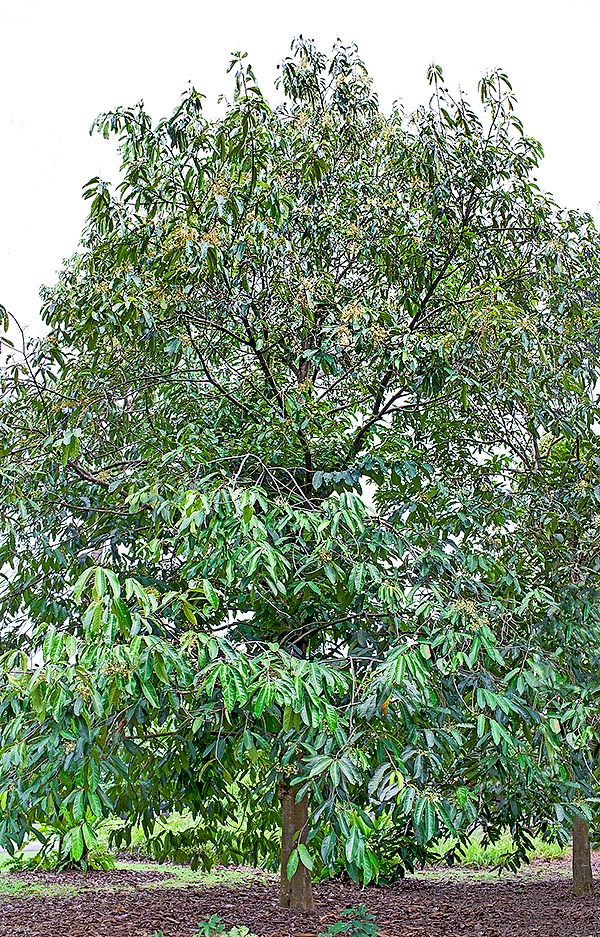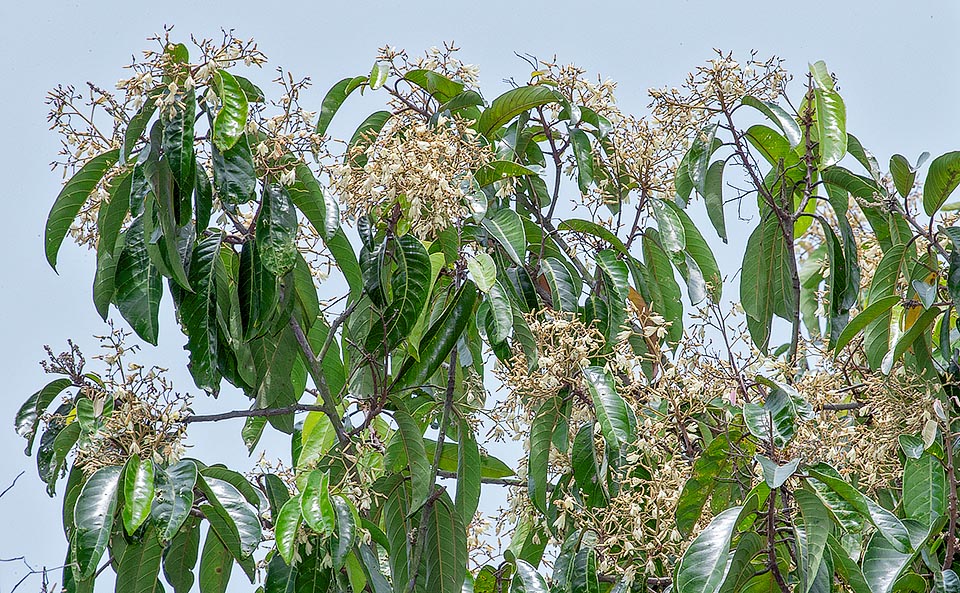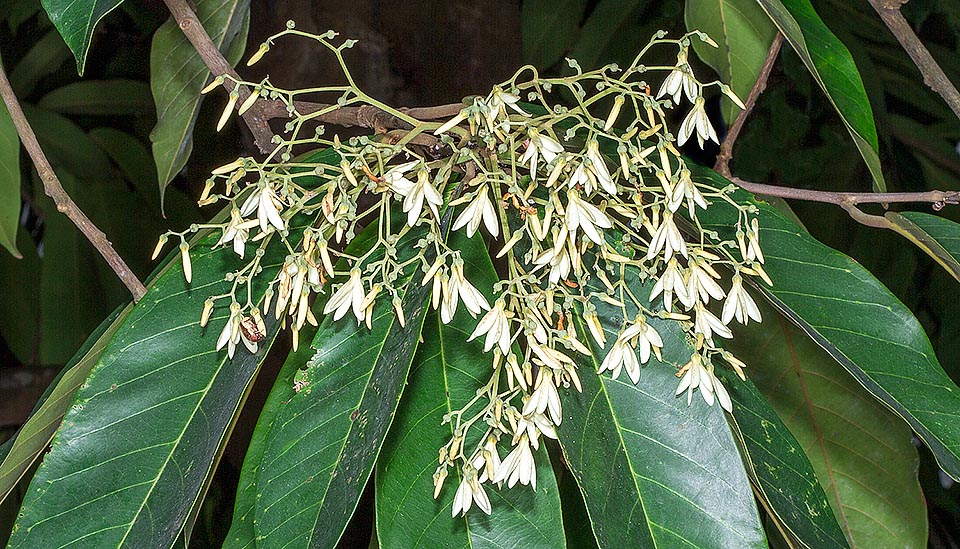Family : Dipterocarpaceae

Text © Pietro Puccio

English translation by Mario Beltramini

Native to Philippines, Indonesia and Papua New Guinea, Vatica rassak can be 30 m tall © Giuseppe Mazza
The species is native to Indonesia (Kalimantan, Maluku Islands, Sulawesi and Western New Guinea), Papua New Guinea and Philippines where it grows in the humid forests, often along the water streams, at low altitudes.
The name of the genus seems to be coming from the Latin “vates, is” = prophet, with reference to a plant called “vatica herba” in the Pseudo-Apuleius Herbarius; the specific name comes from that,“resak”, utilized by the local populations.
Common names: resak (English); tawi-tawi narig (Philippines); rasak, resak, resak ayer, resak irian, resak tebong (Indonesia).
The Vatica rassak Blume (1856) is a tree that can be 30 m tall with cylindrical trunk, of 20-70 cm of diameter, with brown-greyish bark from which exudes a resin of yellowish white colour with reddish streaks.
The leaves are simple, alternate, oblong-lanceolate with pointed apex and entire margin, 10-30 cm long and 5-10 cm broad, rather coriaceous, of glossy dark green colour above, pale green or greyish green below.
Drooping axillar and terminal panicle inflorescences with numerous hermaphroditic flowers of about 2 cm of diameter, with 5 green sepals, 5 free petals of white or white-cream colour, and 5 stamina.
The fruits are oblong capsules, 4-5 cm long and of 2,6-3 cm of diameter, of greenish brown colour with persistent green calyx, containing one globose seed of about 1 cm of diameter.
It reproduces by seed in draining organic loam maintained humid at the temperature of 25-28 °C.
Little known species outside the origin areas, cultivable in the tropical and humid subtropical climate zones in full sun or slight shade; it seems no to be particularly demanding about the soil, provided the same is draining.
The wood, commercially known as resak, of yellowish colour, hard, heavy and long lasting, is utilized in the constructions of the dwellings, for piers, boards, poles and in the fabrication of the plywood. The resin (rose dammar), of fairly good quality and abundantly produced, is locally utilized in caulking boats, in the varnishes and in the torches.

Simple, alternate, oblong-lanceolate leaves with pointed apex and even 30 cm long. Drooping axillar and terminal inflorescences © Giuseppe Mazza
Laboratory studies have revealed the presence in the bark of stilbenoid compounds with antioxidant, anti-inflammatory properties and, in vitro, with high cytotoxicity against groups of tumoral cells, worthy of further study.
Synonyms: Vateria rassak Walp. (1845).

Hermaphroditic flowers of 2 cm of diameter. Hard and heavy wood. Abundant resin for caulking boats, for varnishes and torches. Lab studies have evidenced in the bark the presence of stilbenoid compounds with antioxidant, anti-inflammatory properies and, in vitro, with high cytotoxicity against groups of tumoral cells © G. Mazza
→ To appreciate the biodiversity within the DIPTEROCARPACEAE family please click here.
